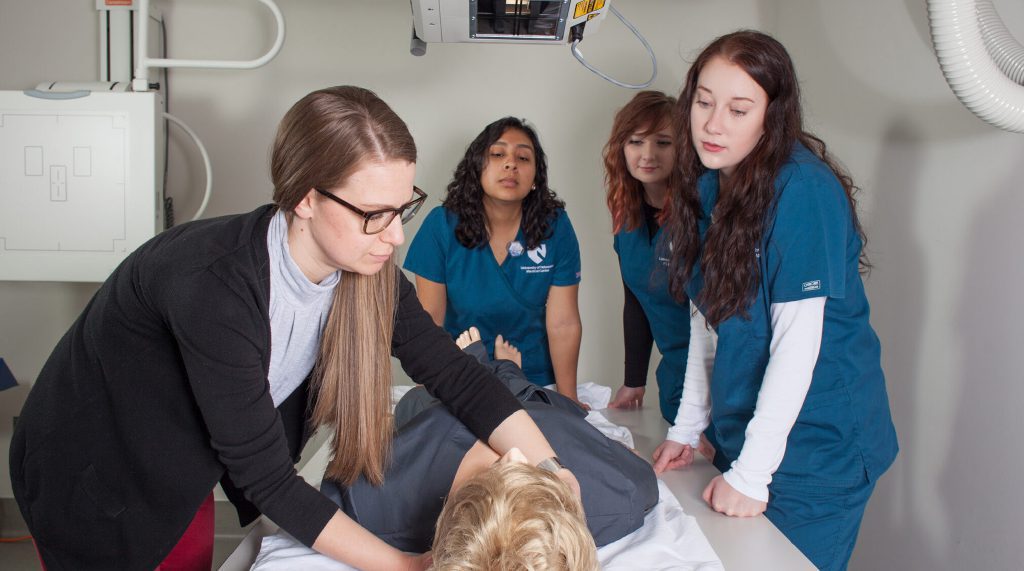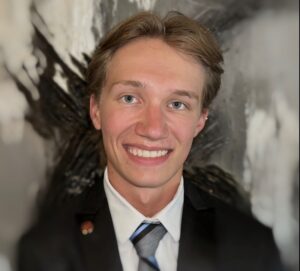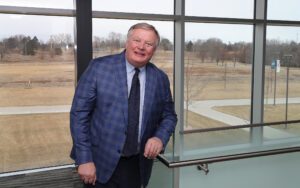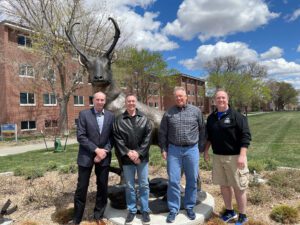As a Top Campaign Priority, UNK and UNMC Aim to Transform Rural Health Care Workforce
By Robyn Murray
For Jordon Potthoff, studying close to home made all the difference.
“I’ve lived in Kearney my whole life,” said Potthoff, who was born at Good Samaritan Hospital on 2nd Avenue and attended Kearney High School, just 4 miles away.
“I still see people I’ve known since childhood,” he said. “That means a lot.”
Potthoff knew from a young age he wanted to study medicine. His uncle was a doctor, and seeing him as a highly regarded professional who spent his days helping people was inspiring. In high school, Potthoff decided on a track: physical therapy. He had experience with sports injuries — a knee injury playing baseball, a hurt shoulder playing football and another knee injury playing basketball.
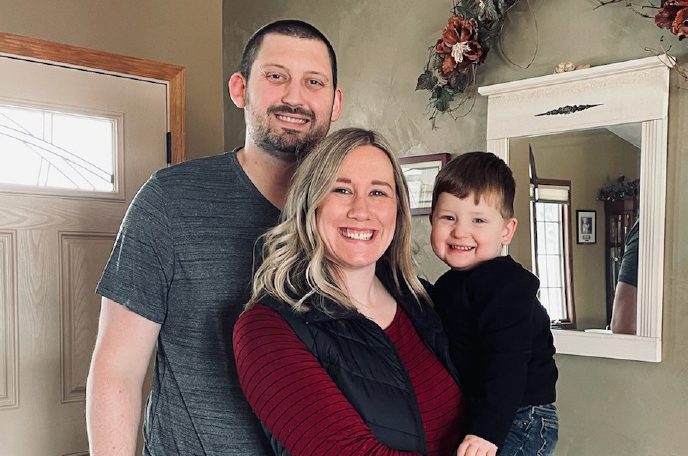
But Potthoff didn’t want to travel far from home to complete his studies. The cost was daunting, and he had already formed a relationship with a local orthopedic and sports rehabilitation facility, New West. Fortunately, his local university — the University of Nebraska at Kearney — had just opened a state-of-the-art Health Sciences Education Complex in partnership with the University of Nebraska Medical Center.
“The facilities were fantastic,” Potthoff said. “We had our own iPads, our own TVs … and a much better teacher-to-student ratio.”
Pothoff enrolled in one of the first classes at the HSEC, a $19 million, 48,000-square-foot building that has been a resounding success. When it opened in 2015, the complex quickly filled to capacity. Today, more than 300 students are pursuing degrees there in more than a dozen professional programs.
The HSEC was built to help Nebraska meet urgent health care workforce needs that are particularly acute in rural areas — the State of Nebraska has designated every county, except for urban Douglas and Lancaster, as a health care shortage area. The center is making significant headway in closing those gaps. Since 2019, there has been a substantial increase in Nebraska’s nursing and pharmacy workforce, and about 85% of the students who graduate from HSEC have started their careers in rural Nebraska.
But demand for health care workers, particularly physicians, continues to outstrip supply. To meet the challenge, UNK and UNMC have again teamed up to build on the progress achieved so far and construct the Rural Health Education Building, which will not only increase capacity to enroll more health care students but will also significantly expand nursing programs and bring the UNMC College of Medicine to Kearney. That means, for the first time, UNMC will educate future physicians in Kearney.
“The intent is really to help grow our health workforce and help rural communities across Nebraska to grow their own future health workforce,” said Nikki Carritt, MPH, director of UNMC Rural Health Initiatives.
The Rural Health Education Building expands not only on the progress of the HSEC but also on several years of work developing a pipeline of rural health care workers in Kearney. Peggy Abels, director of health sciences at UNK, leads the Kearney Health Opportunities Program, which provides scholarships and academic support for health care students.
“We’re trying to set them up to be successful and to retain them in the program,” Abels said. “Students are going to be more likely to practice closer to where they train. So, if we can keep them enrolled in (rural) Nebraska for all of their training, we’re more likely to keep them here as professionals.”
That’s important not only to meet the health care workforce needs of rural Nebraska but also to keep rural communities vibrant.
“The sustainability of rural communities is just vital to the state’s economy,” Abels said, “and access to health care is a really important piece of that sustainability.”
The Rural Health Education Building, which was allocated $50 million in funding from the federal American Rescue Plan during the 2022 Nebraska legislative session, will be located directly north of the Health Sciences Education Complex, creating a hub for health education in rural Nebraska.
“The Rural Health Education Building will serve a crucial role in filling shortages in all medical professions across Nebraska, especially our rural communities,” said UNK Chancellor Doug Kristensen at the time. “This funding will help UNMC and UNK build a transformational facility and roll out comprehensive education covering most disciplines offered by UNMC.”
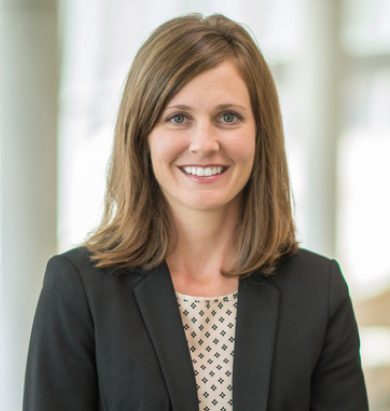

The $50 million allocated by lawmakers will support construction of the building, with an additional $35 million needed from private donations. So far, more than $16 million has been pledged by donors.
Carritt said the building will prevent the disruption that comes from moving to an urban area to study.
“Once you make that step, sometimes it’s really difficult to go back,” Carritt said. “Students can also continue to maintain relationships with community partners and mentors and alumni throughout that long process of becoming a health care professional, so that they have and retain that interest in going back to those roles.”
That was a key benefit for Potthoff. Studying close to home meant his relationship with New West grew from shadowing the facility in high school to interning while at UNK to a full-time position after graduation.
“That helped to form a relationship,” he said, “which ended up being my job.”
Potthoff also met his wife at UNK, and now they have a young son whom they enjoy raising in a small city with long friendships and short commutes.
“We’re close to family,” he said. “You have pretty much everything you need, and it seems like they’re always working on making it better.”

